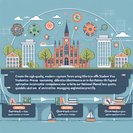
Australia’s opposition Coalition has begun sketching out one of the most far-reaching immigration reductions since the 1990s. In interviews and party-room briefings on 18 November, deputy Liberal leader Sussan Ley and shadow home-affairs minister Jonno Duniam confirmed that a future Coalition government would “significantly” lower both the skilled-migration and international-student intakes. Senior MPs indicated the party wants net-overseas-migration to drop well below the Treasury projection of 260,000 in 2025-26, linking any future cap to state capacity to build new housing, hospital beds and classrooms.
Although the Coalition will not release a headline number until closer to the 2028 election, back-benchers are pushing for a return to Howard-era levels of about 100,000 permanent migrants a year. They argue demand-driven migration is worsening housing affordability and straining infrastructure. Moderates inside the party caution that any cuts must avoid demonising multicultural communities and should be paired with robust labour-market planning so that genuine skills shortages—especially in construction and healthcare—are still filled.
![Coalition flags sharp cuts to skilled migration and international student visas]()
Business groups have warned that abrupt cuts could backfire. Commonwealth Bank chief executive Matt Comyn told a parliamentary committee that Australia’s ageing population will require at least 180,000 migrants a year to maintain workforce growth and tax revenue. Universities Australia has also raised red flags, noting that foreigners now account for one in four enrolments and billions in export income; a sudden reduction could trigger job losses on campus and in regional economies that rely on student spending.
Policy analysts say the announcement increases political pressure on the Albanese government, which kept this year’s permanent-migration program at 185,000 places but is already tightening temporary-visa pathways. If the Coalition wins office, it will inherit the new three-stream Skills-in-Demand visa and higher financial and English-language hurdles for students; reversing those would require fresh legislation. Conversely, slashing migration without boosting home building could deepen labour shortages and slow GDP growth, according to Deloitte Access Economics.
For employers and education providers the immediate takeaway is uncertainty: visa settings could swing again within three years. Companies reliant on sponsored workers should accelerate nominations while current rules stand, and universities may need to diversify enrolments beyond the high-risk markets already facing stricter scrutiny. Mobility teams should scenario-plan for a smaller skilled stream, longer lead times for employer sponsorship and possible new fees on student visas if the Coalition seeks to recoup revenue after any cap.
Although the Coalition will not release a headline number until closer to the 2028 election, back-benchers are pushing for a return to Howard-era levels of about 100,000 permanent migrants a year. They argue demand-driven migration is worsening housing affordability and straining infrastructure. Moderates inside the party caution that any cuts must avoid demonising multicultural communities and should be paired with robust labour-market planning so that genuine skills shortages—especially in construction and healthcare—are still filled.

Business groups have warned that abrupt cuts could backfire. Commonwealth Bank chief executive Matt Comyn told a parliamentary committee that Australia’s ageing population will require at least 180,000 migrants a year to maintain workforce growth and tax revenue. Universities Australia has also raised red flags, noting that foreigners now account for one in four enrolments and billions in export income; a sudden reduction could trigger job losses on campus and in regional economies that rely on student spending.
Policy analysts say the announcement increases political pressure on the Albanese government, which kept this year’s permanent-migration program at 185,000 places but is already tightening temporary-visa pathways. If the Coalition wins office, it will inherit the new three-stream Skills-in-Demand visa and higher financial and English-language hurdles for students; reversing those would require fresh legislation. Conversely, slashing migration without boosting home building could deepen labour shortages and slow GDP growth, according to Deloitte Access Economics.
For employers and education providers the immediate takeaway is uncertainty: visa settings could swing again within three years. Companies reliant on sponsored workers should accelerate nominations while current rules stand, and universities may need to diversify enrolments beyond the high-risk markets already facing stricter scrutiny. Mobility teams should scenario-plan for a smaller skilled stream, longer lead times for employer sponsorship and possible new fees on student visas if the Coalition seeks to recoup revenue after any cap.








